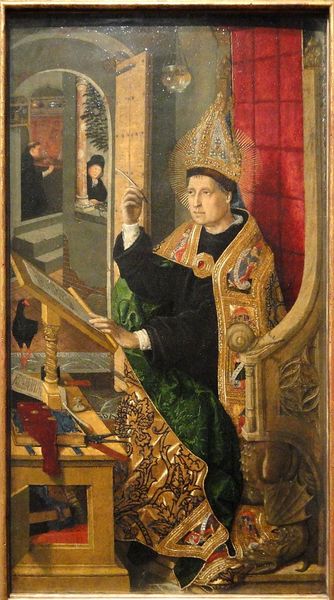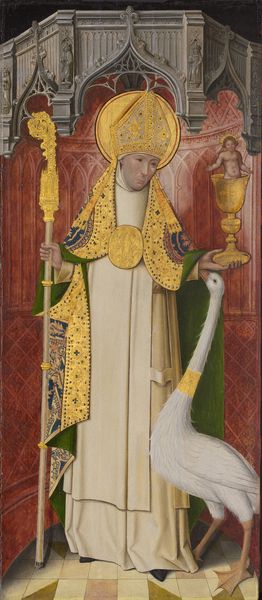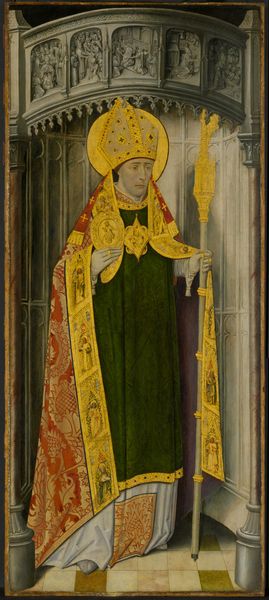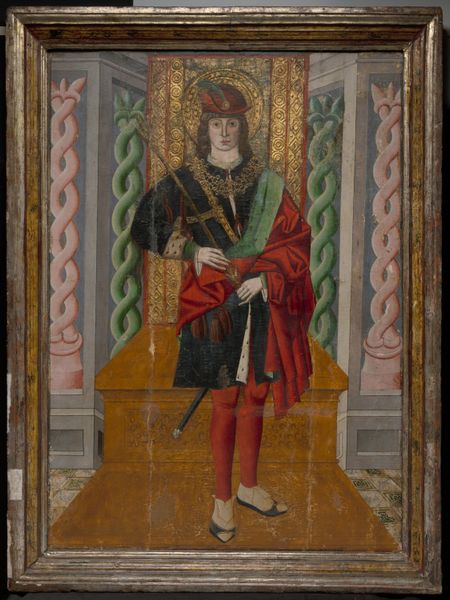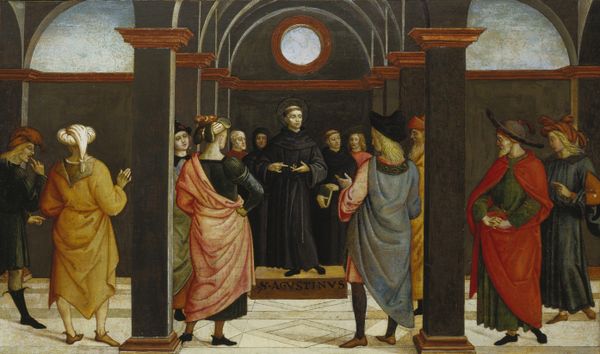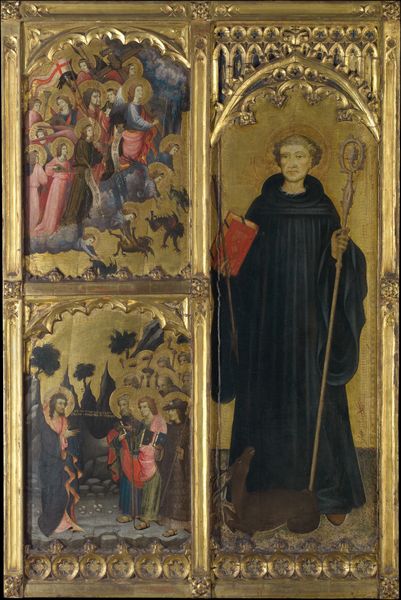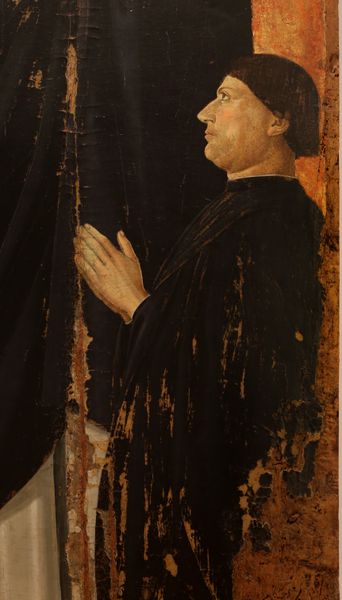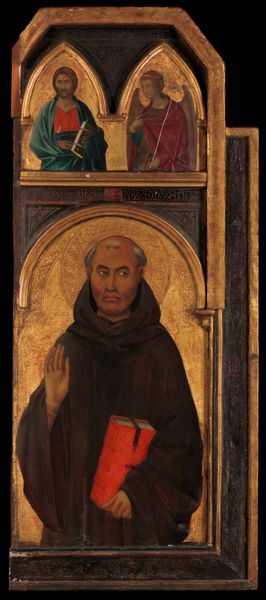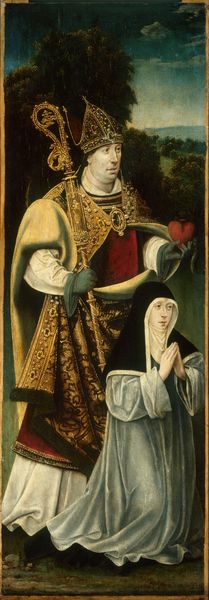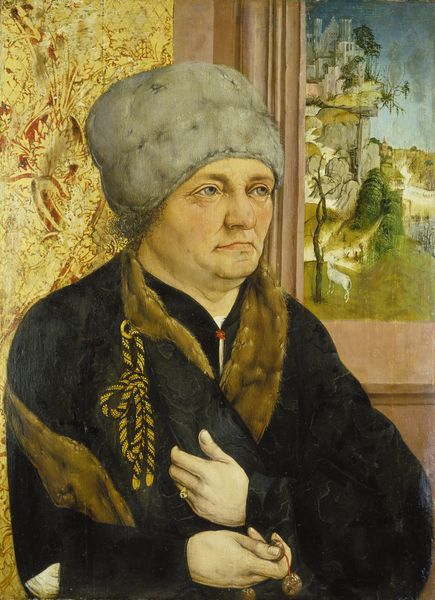
sculpture
#
character portrait
#
oil painting
#
underpainting
#
sculpture
#
painting painterly
#
portrait drawing
#
watercolour illustration
#
facial portrait
#
portrait art
#
watercolor
#
digital portrait
Dimensions: 49 × 27.7 cm (19 5/16 × 10 15/16 in. ); painted surface: 48.2 × 26.8 cm (19 × 10 9/16 in.)
Copyright: Public Domain
Curator: Saint Augustine, completed by Bartolome Bermejo between 1477 and 1485. Notice the subject's ornate attire. Editor: The sheer weight of detail in the robes and the gold work—it feels incredibly dense, visually almost oppressive. What’s your initial reaction to the palette? Curator: Beyond the artistry itself, what intrigues me are the likely circumstances surrounding this panel's creation. Bermejo operated within a network of patronage and trade. Who commissioned it, for what purpose, and how did its existence shape the artistic and spiritual landscape of the time? What about the workshops used to produce the underpainting for the work? Editor: An intriguing direction of enquiry! If we focus purely on the formal aspects for a moment, I am drawn to the textural contrasts. The soft rendering of Saint Augustine's face against the crisp linearity of his mitre. And what do you make of the light source, seemingly internal, radiating outward? Curator: Those questions could reveal insights into the cultural attitudes towards art-making. Did they value individual genius or collaborative skill? Did they approach "high" art and craft as distinct categories, or see them as intrinsically linked aspects of production? It all gets obscured, I think, if we ignore production’s economic realities. Editor: Fair enough. Yet, irrespective of the socio-economic context, can't we still appreciate the sheer technical mastery? The layering of paint, the command of perspective—observe how he uses architectural elements to create depth, drawing the eye into that mysterious, smaller scene within the scene! Curator: "Mastery" only exists within a set of power relations. Whose values define mastery? Are we talking about religious expression, or craft, or is Bermejo’s ‘skill’ simply about reproducing certain cultural hierarchies for specific consumers? Editor: Perhaps it's both. It seems the longer we look, the more dimensions reveal themselves. The dialogue between light and shadow, detail and simplicity, history and… something beyond. Curator: Perhaps understanding those systems brings the sacredness of the work closer and questions its intentions.
Comments
No comments
Be the first to comment and join the conversation on the ultimate creative platform.
